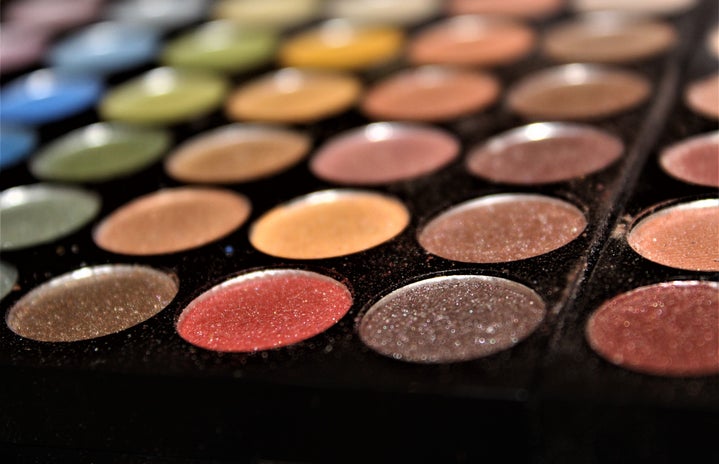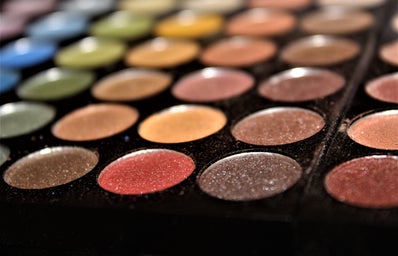Applying makeup should be a relaxing time for you to sit down and focus on feeling your best- it shouldn’t be as stressful as finals week. But sometimes problems arise and you may feel like you’ve ruined the look you just spent 45 minutes on. If you happen to run into a problem, don’t worry. Here are some tried-and true-tricks . Chances are, you probably already have everything you need to use to fix these problems in your beauty arsenal.
1. Using Too Much Foundation
If you’ve used a little too much foundation and you’re having problems blending it in, put down the brush or blending sponge you were using. Take the clean side of a damp blending sponge and bounce it up on down on your skin. The sponge absorbs any extra foundation and allows the product to blend in. If you have a problem area that needs some extra product, work in small layers. Smaller layers dry quickly and allow the foundation to sink into your skin, rather than sitting on top, which makes it easier to blend.
2. Foundation Clinging to Dry Patches
Dry winter air can wreak havoc on your skin and leave you with some dry patches. Don’t worry if you find your makeup clinging to these spots. Put a tiny bit of facial oil or moisturizer on a blending sponge and bounce it over this area. The oil or moisturizer will give your skin a little extra moisture it needs to blend in your foundation.
3. Foundation/Concealer Sitting on Top of Skin and Enlarging Pores and Wrinkles
For pores that won’t quit and smile lines that crack through any foundation, loose powder and a blending sponge are your best friends. Using a method called “baking,” dip a damp blending sponge into loose powder and pat it on your skin. If you have so much powder sitting on top of your face that your own appearance scares you, you’re doing it right. After a few minutes, take a clean powder brush and brush off the excess powder that hasn’t absorbed into your skin. Baking leaves your skin smooth and locks in your makeup so it will last longer. If you’re still having issues with pores and fine lines, try using a silicone-based primer. The silicone fills in your pores and leaves you with a smoother canvas to work with.
4. Using Too Much Bronzer, Blush, or Highlight
A little blush can add life to your skin, but too much can make you look like you just finished running four miles. For cream products, bounce a damp beauty blender on the area to absorb some of the excess product. For powder products, take a large powder brush, dip it into you favorite setting powder, and blend with circular motions. You should see patchy areas blend in and areas with too much product start to lighten.
5. Eyeshadow Fallout
The easiest way to prevent eyeshadow fallout from ruining your look is to do your eye makeup before the rest of your face, but sometimes we forget or go for a more complicated eye look than originally planned. Before using a pigmented or dark eyeshadow, bake your under-eye area (see tip #4). The extra powder creates a barrier between the skin, so if fallout does happen, it will cling to the powder instead of your foundation and concealer. When your eyeshadow is done and you’re ready to brush away the bake, the fallout will brush away with it.
6. Eyeshadow Isn’t Blending
The best way to get your eyeshadow to blend, is to use a lot of eyeshadow. This might sound counterintuitive, but it really does work. Make sure your entire lid area, from your lash line to your brows, is set with a light-colored eyeshadow or setting powder before applying any other eyeshadows. If you’re having a hard time blending as your applying product, dip a blending brush into translucent setting powder and use that to blend. It won’t interfere with the color of your eyeshadow and blending will be easier.
7. Eyeliner Isn’t Straight, Even, or at the Right Angle
If you were trying to even out your eyeliner and ended up with a bolder look than expected, use concealer to cover up any excess liner. With either the wand or a small concealer brush, draw a line of concealer wherever you want to coverup the liner. Blend in the concealer with the brush or your finger, set it with powder, and you and your perfect eyeliner are good to go. If you haven’t done the rest of your face makeup, use a makeup remover pen, like this one from e.l.f., to swipe away mistakes.
8. Getting Mascara on Your Lid
Every makeup junkie’s worst nightmare has to be getting mascara all over your lid after spending forever on your eyeshadow. If this happens, don’t touch the mascara! Let it fully dry on your eyelid for a few minutes before trying to wipe it away. Allowing the mascara to fully dry prevents it from smearing. When it dries over powder eyeshadow, it should be able to ball up and roll off more easily.
9. Patchy Lipstick
Apply lip liner prior to lipstick to ensure the color is even and for smoother application. If your lipstick is still patchy after, add a bit of lip gloss or balm. Your lipstick may not be as matte, but the extra moisture will help it blend out. If you really want your lipstick to stay matte, press a tissue over your lips and apply a thin layer of powder on top.
10. Makeup Breaks-Up Throughout the Day
Even perfectly applied makeup can start to wear after a few hours. When oil breaks through and you start to look shiny, you can still save your look. Make sure to use blotting papers- or even a tissue- to soak up any excess oils. If you try to apply powder right on top of the oil without removing it, the oil will just seep through the powder and make your skin shiny again. After the excess oil is removed, bounce a damp beauty sponge over any patchy areas, apply more concealer where needed, set the area with powder, and go about the rest of your day.
Next time you have a makeup mishap, don’t sweat it- especially after you just finished all your makeup. Just follow these tricks and you’ll be out the door like nothing ever happened.


